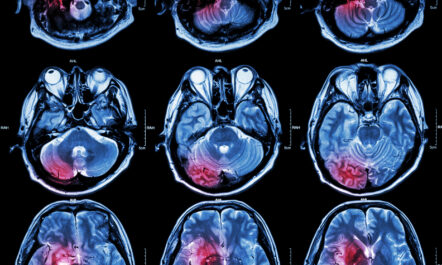News
Summary
It is generally accepted that obesity causes erectile dysfunction in men. It is quite common for a man to put on several kg’s and notice increasing difficulty getting and maintaining an erection. A dependable erection is a sign of good health and when your health and wellbeing begin to diminish so will your sexual function.
What is ED?
Erectile dysfunction is a common disorder that is characterized by the inability to achieve an erection or maintain it in the way that satisfies the man for his sexual performance.
The normal function of the penis was always an important issue for men. It is considered by men as “the masculine symbol”. It is also of great importance to doctors as any sexual dysfunction is often, not always, the first sign of a more serious condition and a wakeup call to men to begin healthier living.
The statistics
According to data;
- 150 million men worldwide face a type of erectile dysfunction and
- There are estimations that this number will double by the year 2025.
On the other hand, obesity is an epidemic that characterizes both developed and developing countries. In 2014–15, more than 60% of Australians aged 18 and over were overweight or obese.
According to multiple studies, there is a connection between obesity and ED. Furthermore, the severity of ED is associated with several other metabolic diseases.
How do you calculate your BMI?
First lets calculate your Body Mass Index to assess your risk.
Being overweight or obese is used to express excessive fat accumulation that can potentially cause health risks. For decades, the body mass index (BMI) is considered as the “golden standard” for measuring overweight and obesity in population surveys.
BMI is calculated by dividing a person’s weight (in kilograms) by their height (in meters) squared: BMI = kg/m2 (Aihg.gov.au,2017).
| BMI classifications for adults defined by the World Health Organization | |
| Underweight | <18.5 |
| Normal Weight | 18.5-24.99 |
| Overweight | 25-29.99 |
| Class I obese | 30-34.99 |
| Class II obese | 35-39.99 |
| Class III obese | >40 |
What does a high BMI mean for your sex life?
There is a negative correlation between the sexual quality of life and BMI. Obesity is also associated with;
- lower levels of self-esteem,
- depression, and
- anxiety
Such mood disorders are the causal factors of psychogenic erectile dysfunction and can significantly affect the sexual function of a person who has no physical reason for erectile dysfunction.
In a study among obese patients before bariatric surgery, researchers found that
- 12% of men reported no sexual desire
- ¼ of the male participants were not sexually active
- more than half of the male participants were moderately or very dissatisfied with their sexual life
Factors like being single, older age, depression, and certain medication use is associated with poorer sexual function.
What is the link between obesity and erectile dysfunction?
There are studies indicating that when ED is accompanied by a person who follows a high caloric diet and has a high BMI, usually it is a result of damage to the interior surface of blood vessels and lymphatic vessels.
Obesity is considered an independent risk factor for ED and men with increased fat around the abdomen.
The major links between obesity and ED are derangements of hypothalamic regulation of the neuroendocrine system and endothelial dysfunction.
The hypothalamus is responsible for the regulation of certain metabolic processes and other activities of the autonomic nervous system. It controls your hunger, your libido, your thirst, your energy levels and your sleep, amongst other things.
The neuroendocrine system responds to stimulation by secreting hormones into the circulatory system that travel to the target tissue.
The endothelium is a thin layer of cells that line the interior surface of blood vessels and lymphatic vessels. Endothelial dysfunction can be caused by several conditions, including diabetes or metabolic syndrome, hypertension, smoking, alcoholism, and an unhealthy lifestyle.
Vasculogenic ED is considered as the most common form of organic ED and can be caused by endothelial dysfunction. On top of that, research shows that vasculogenic ED usually characterizes obese patients at a higher level than the rest of organic ED cases.
Body fat and LowT
LowT is very common among obese men no matter their age. Obesity and hormones have a bidirectional relation. On the one side, LowT levels predict the development of abdominal obesity, on the other hand, obesity predicts low total and free T levels.
In males, obesity is considered the most important factor associated with LowT levels. According to a study, obese men have 30 % lower total levels compared to lean men. There are human studies indicating that fat-derived adipokines and pro-inflammatory factors can potentially cause the suppression of production. In addition, LowT promotes fat tissue accumulation and reduces the formation of muscles, which are crucial for increased metabolism.
Furthermore, even when obese men have normal levels there is an increased risk of erectile dysfunction.
Body fat and blood glucose
There are numerous studies confirming the association between obesity and blood glucose. Earlier studies suggested that the hormonally active visceral adipose tissue is the main among the fat tissues that causes resistance. In addition, the mechanisms by which visceral obesity results in resistance appear to be related to excess lipid accumulation in the liver which can potentially lead to impaired function.
A recently published study highlights the association between body fat percentage and hormonal resistance in adults with a normal BMI. Specifically, researchers concluded that the prevalence of this resistance was increased in the participants who have elevated body fat percentage compared to the ones who had normal body fat levels.
Can weight loss treat erectile dysfunction?
Weight loss is one of the suggested lifestyle modifications to improve or even treat the erectile dysfunction.
The first step is to make small daily changes to your dietry habits.
- Reduce the amount of carbs on your plate
- Increase the amount of vegetables
- Drink more water
- Cut out sugar
- Reduce the amount of take-away you consume
- Increase daily activity
- Decrease alcohol consumption
There is a study concluding that bariatric surgery significantly improves ED in obese men. Moreover, weight loss through bariatric surgery improves blood glucose levels and increases pressure and endothelial functions that are involved in penis erection.
It is worth mentioning that not only long-term but also short-term weight-loss studies have demonstrated improvement in ED. In addition, a 4- week study showed that weight loss seemed to have been beneficial on sexual life among men.
In an intervention study among obese participants who lost an average of 15% of their body weight, the endothelial, and inflammatory markers all reduced. Moreover, almost one out of three men had erectile function restored after the weight loss intervention.
I have lost weight but I still have ED. Now what?
An experienced sexual health doctor at a reputable clinic will understand that ED can be caused by a combination or variety of factors and will explore all the options.
Obesity is not the only causal factor of ED. Therefore, we might need to find the causal factor of ED to act accordingly. Weight loss can be beneficial not only for erectile dysfunction but to prevent or treat several other diseases as well. Therefore, keeping a low body weight should be a lifelong goal no matter of the noticed improvement in erectile dysfunction.
The good news.
The good news is that there are a variety of ways to treat a weak erection quickly and easily in addition to lowering your BMI. For a permanent improvement in your sexual function we highly advise you first uncover the underlying reason of your ED and then combine lifestyle changes with any potential pharmaceutical intervention that is deemed medically necessary. In addition to lowering your BMI consider the following options;
- TREATMENTS: Nowadays, doctors have many treatment options that can help you improve your erectile function. However, there is a significant percentage of 30%–35% of patients who do not respond to the most common over the counter treatments, i.e. diabetics.
- EXERCISE: Exercise has a protective role against erectile dysfunction and it improves erectile function of males who face vascular erectile dysfunction. Physical activity can be a useful tool to decrease ED and according to the current recommendations, this can be achieved by 40 minutes of aerobic training (moderate to vigorous intensity) for at least 4 times per week.
- QUIT SMOKING: Even a short smoking abstinence period of 1-5 days in heavy smokers can lead to significant improvements in vascular erectile parameters. When smoking cessation was studied with the use of an 8-week nicotine replacement therapy, researchers reported a significant improvement in erectile function at a 1-year follow-up. However, this improvement was only noticed in younger males with a more minor smoking history who did not have other comorbidities. The sooner you quit the better.
- PSYCHOLOGY: As a supplementary but equally important therapy for ED, doctors also suggest psychotherapy. Psychotherapy for ED aims to understand the context in which men make love, to identify the resistances to medical intervention that lead to premature discontinuation, to reduce anxiety and stress related to performance and to implement psychological education involving sexual scripts. Psychotherapy is a useful tool for clinicians as it significantly increases the effectiveness of their treatment interventions for ED.
Conclusion
The research is clear. Obesity causes erectile dysfunction in men and your first step towards improving your erectile function should always be to improve your lifestyle. It is no wonder that obesity signifies a series of health and psychological challenges which in turn leads to the onset of erectile dysfunction. The first step towards recovery from erectile dysfunction should always be improving your lifestyle and lowering your BMI.
References
- Althof, S. and Wieder, M., 2004. Psychotherapy for Erectile Dysfunction: Now More Relevant Than Ever. Endocrine, 23(2-3), pp.131-134. https://pubmed.ncbi.nlm.nih.gov/15146091/
- Aytaç, Mckinlay and Krane, 1999. The likely worldwide increase in erectile dysfunction between 1995 and 2025 and some possible policy consequences. BJU International, 84(1), pp.50-56. https://pubmed.ncbi.nlm.nih.gov/10444124/
- Dean, R. and Lue, T., 2005. Physiology of Penile Erection and Pathophysiology of Erectile Dysfunction. Urologic Clinics of North America, 32(4), pp.379-395. https://www.ncbi.nlm.nih.gov/pmc/articles/PMC1351051/
- Esfahani, S. and Pal, S., 2018. Obesity, mental health, and sexual dysfunction: A critical review. Health Psychology Open, 5(2), p.205510291878686. https://journals.sagepub.com/doi/full/10.1177/2055102918786867
- Esposito, K., Maiorino, M. and Bellastella, G., 2015. Lifestyle modifications and erectile dysfunction: what can be expected?. Asian Journal of Andrology, 17(1), p.5. https://www.ncbi.nlm.nih.gov/pmc/articles/PMC4291878/
- Evans M., 2005. Lose weight to lose erectile dysfunction. Can Fam Physician. 51(1): 47–49. https://www.ncbi.nlm.nih.gov/pmc/articles/PMC1479584/
- Gerbild, H., Larsen, C., Graugaard, C. and Areskoug Josefsson, K., 2018. Physical Activity to Improve Erectile Function: A Systematic Review of Intervention Studies. Sexual med., 6(2), pp.75-89. https://www.ncbi.nlm.nih.gov/pmc/articles/PMC5960035/
- Hardy, O., Czech, M. and Corvera, S., 2012. What causes the glucose-controlling hormone resistance underlying obesity?. Current Opinion in Endocrinology & Diabetes and Obesity, 19(2), pp.81-87. https://www.ncbi.nlm.nih.gov/pmc/articles/PMC4038351/
- Kalsi, J. and Muneer, A., 2013. Erectile dysfunction – an update of current practice and future strategies. Journal of Clinical Urology, 6(4), pp.210-219. https://www.ncbi.nlm.nih.gov/pmc/articles/PMC4467226/
- Kaminetsky, J., 2008. Epidemiology and pathophysiology of male sexual dysfunction. International Journal of Impotence Research, 20(S1), pp.S3-S10. https://pubmed.ncbi.nlm.nih.gov/18552831/
- Kovac, J., Labbate, C., Ramasamy, R., Tang, D. and Lipshultz, L., 2014. Effects of cigarette smoking on erectile dysfunction. Andrologia, 47(10), pp.1087-1092. https://pubmed.ncbi.nlm.nih.gov/25557907/
- Moon, K., Park, S. and Kim, Y., 2019. Obesity and Erectile Dysfunction: From Bench to Clinical Implication. The World Journal of Men’s Health, 37(2), p.138. https://www.ncbi.nlm.nih.gov/pmc/articles/PMC6479091/
- Ng Tang Fui, M., Prendergast, L., Dupuis, P., Raval, M., Strauss, B., Zajac, J. and Grossmann, M., 2016. Effects of testosterone treatment on body fat and lean mass in obese men on a hypocaloric diet: a randomised controlled trial. BMC Med., 14(1). https://bmcmedbiomedcentral.com/articles/10.1186/s12916-016-0700-9
- Pelusi, C. and Pasquali, R., 2012. The Significance of Low Testosterone Levels in Obese Men. Current Obesity Reports, 1(4), pp.181-190. https://link.springer.com/article/10.1007/s13679-012-0029-4
- Steffen, K., King, W., White, G., Subak, L., Mitchell, J., Courcoulas, A., Flum, D., Strain, G., Sarwer, D., Kolotkin, R., Pories, W. and Huang, A., 2017. Sexual functioning of men and women with severe obesity before bariatric surgery. Surgery for Obesity and Related Diseases, 13(2), pp.334-343. https://www.ncbi.nlm.nih.gov/pmc/articles/PMC6067110/
- Verze, P., Margreiter, M., Esposito, K., Montorsi, P. and Mulhall, J., 2015. The Link Between Cigarette Smoking and Erectile Dysfunction: A Systematic Review. European Urology Focus, 1(1), pp.39-46. https://www.eu-focus.europeanurology.com/article/S2405-4569(15)00020-6/fulltext
- Yafi, F., Jenkins, L., Albersen, M., Corona, G., Isidori, A., Goldfarb, S., Maggi, M., Nelson, C., Parish, S., Salonia, A., Tan, R., Mulhall, J. and Hellstrom, W., 2016. Erectile dysfunction. Nature Reviews Disease Primers, 2(1). https://www.nature.com/articles/nrdp20163?proof=t
- Zegarra-Lizana, P., Ramos-Orosco, E., Guarnizo-Poma, M., Pantoja-Torres, B., Paico-Palacios, S., Del Carmen Ranilla-Seguin, V., Lazaro-Alcantara, H. and Benites-Zapata, V., 2019. Relationship between body fat percentage and glucose-controlling hormone resistance in adults with Bmi values below 25 Kg/M2 in a private clinic. Diabetes & Metabolic Syndrome: Clinical Research & Reviews, 13(5), pp.2855-2859.









